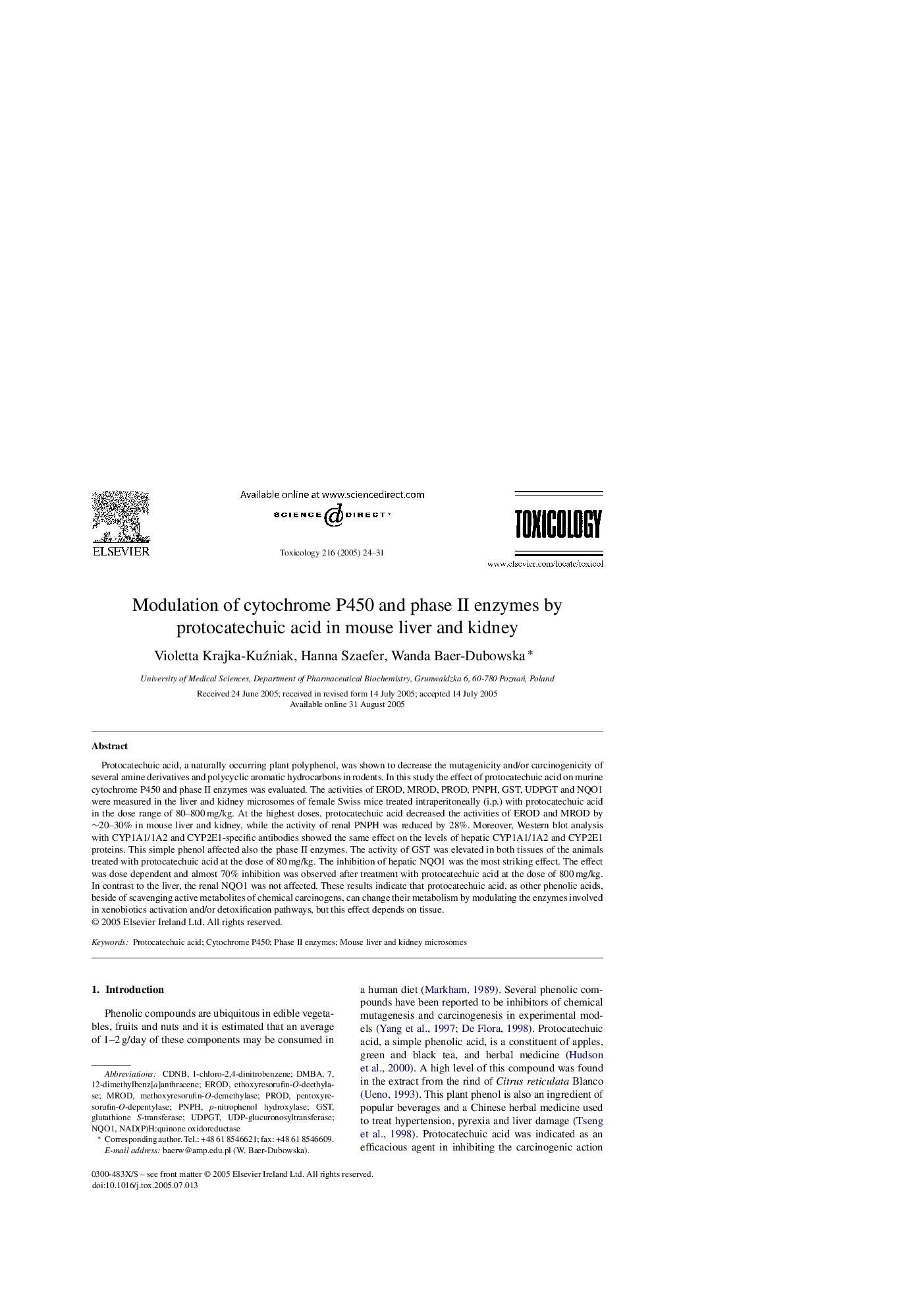| Article ID | Journal | Published Year | Pages | File Type |
|---|---|---|---|---|
| 9034829 | Toxicology | 2005 | 8 Pages |
Abstract
Protocatechuic acid, a naturally occurring plant polyphenol, was shown to decrease the mutagenicity and/or carcinogenicity of several amine derivatives and polycyclic aromatic hydrocarbons in rodents. In this study the effect of protocatechuic acid on murine cytochrome P450 and phase II enzymes was evaluated. The activities of EROD, MROD, PROD, PNPH, GST, UDPGT and NQO1 were measured in the liver and kidney microsomes of female Swiss mice treated intraperitoneally (i.p.) with protocatechuic acid in the dose range of 80-800Â mg/kg. At the highest doses, protocatechuic acid decreased the activities of EROD and MROD by â¼20-30% in mouse liver and kidney, while the activity of renal PNPH was reduced by 28%. Moreover, Western blot analysis with CYP1A1/1A2 and CYP2E1-specific antibodies showed the same effect on the levels of hepatic CYP1A1/1A2 and CYP2E1 proteins. This simple phenol affected also the phase II enzymes. The activity of GST was elevated in both tissues of the animals treated with protocatechuic acid at the dose of 80Â mg/kg. The inhibition of hepatic NQO1 was the most striking effect. The effect was dose dependent and almost 70% inhibition was observed after treatment with protocatechuic acid at the dose of 800Â mg/kg. In contrast to the liver, the renal NQO1 was not affected. These results indicate that protocatechuic acid, as other phenolic acids, beside of scavenging active metabolites of chemical carcinogens, can change their metabolism by modulating the enzymes involved in xenobiotics activation and/or detoxification pathways, but this effect depends on tissue.
Keywords
GSTMethoxyresorufin-O-demethylasePRODUDPGTPNPHMRODNQO1ethoxyresorufin-O-deethylaseCDNBERODDMBA1-chloro-2,4-dinitrobenzene7,12-Dimethylbenz[a]anthraceneNAD(P)H:quinone oxidoreductasep-nitrophenol hydroxylaseUDP-glucuronosyltransferasephase II enzymesprotocatechuic acidCytochrome P450glutathione S-transferase
Related Topics
Life Sciences
Environmental Science
Health, Toxicology and Mutagenesis
Authors
Violetta Krajka-Kuźniak, Hanna Szaefer, Wanda Baer-Dubowska,
